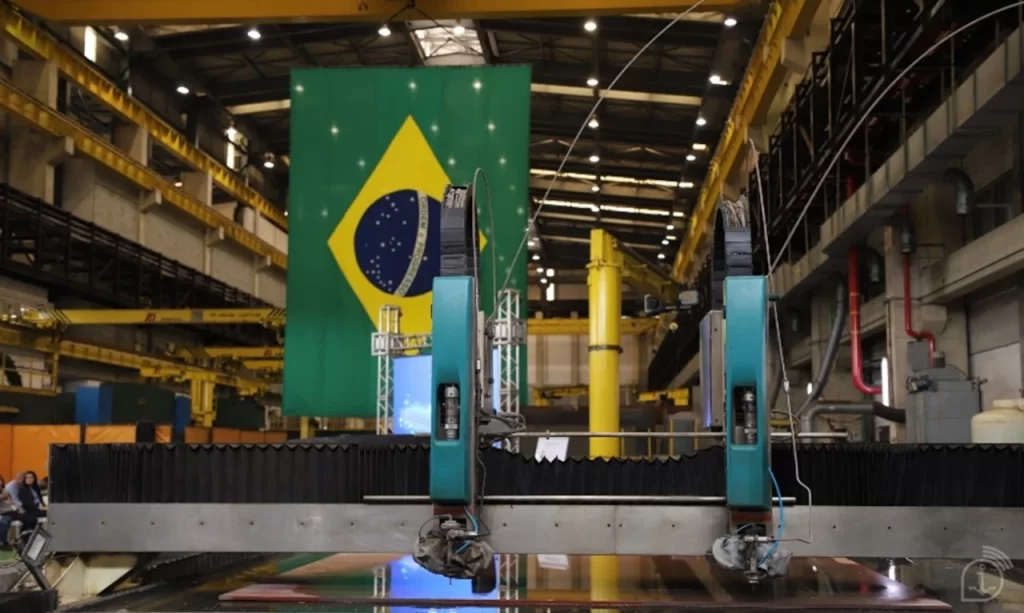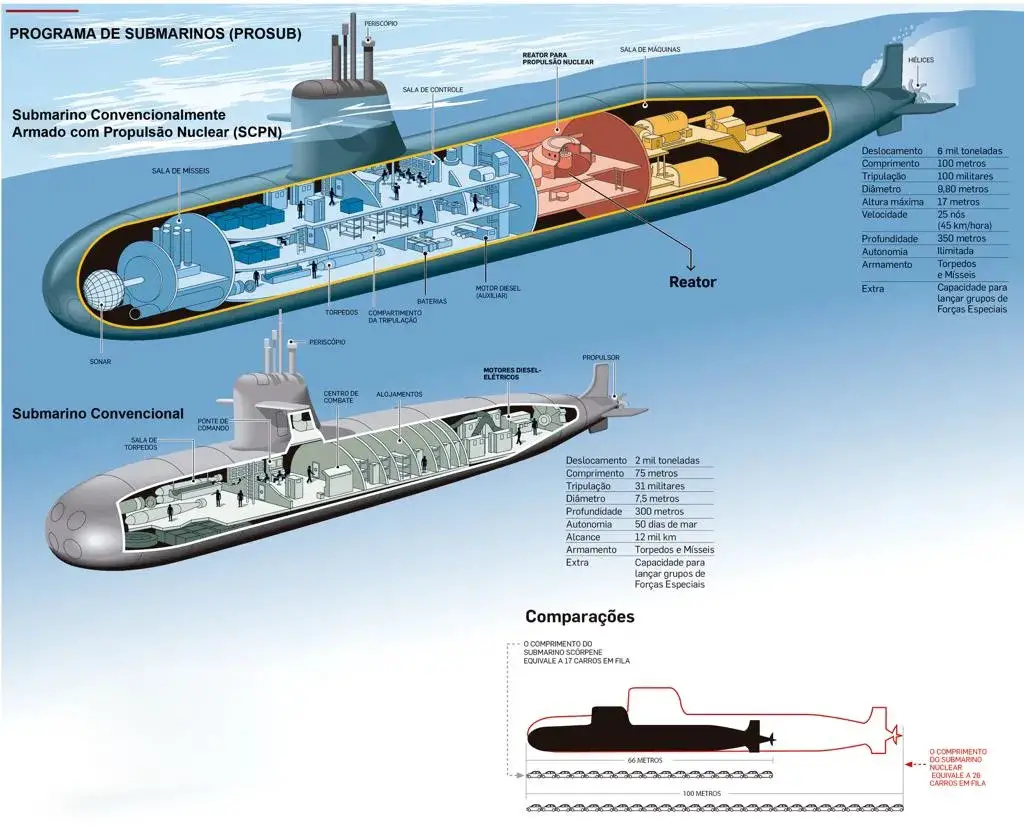In Sepetiba Bay, Rio de Janeiro state, on October 4, 2023, an official ceremony was held at the Brazilian special submarine shipyard Itaguai Construcoes Navais (ICN) to commemorate the cutting of the initial steel for the construction of Brazil’s first nuclear-powered submarine (SSN). With this, the Submarino Convencionalmente Armado com Propulso Nuclear (SCPN) programme officially initiated the construction of this vessel, designated as SN-BR.
In actuality, the steel cutting at ICN on October 4, 2023, was not for the actual hull of the future Brazilian nuclear-powered submarine (SSN) but rather for the construction of a 100-ton experimental pressure hull segment (“qualification section” – Secío de Qualificacío). This segment is intended for evaluating the pressure hull manufacturing process and will not be used in the submarine’s hull construction. If the “qualification section” satisfies the criteria, ICN will initiate construction of the actual hull of the first Brazilian SSN. The optimistic target is to launch it into the water in 2029, although a more cautious date of 2031 is occasionally referenced. The Brazilian Navy is expected to begin using it between 2032 and 2035.

Due to obvious geopolitical constraints, the Brazilian programme for developing nuclear submarines began in 1976 to develop a wholly independent nuclear propulsion technology with its nuclear fuel cycle. By the 2000s, Brazil had accomplished its objective of developing its nuclear propulsion technology and uranium enrichment centrifuge technology despite significant delays and periodic interruptions in the Brazilian programme caused by political, technological, and economic matters. At the ARAMAR nuclear research centre in Iperó, So Paulo, in 2018, a prototype of the Brazilian naval nuclear reactor, Reator Multiuso Brasileiro (LABGENE), a pressurised water-type reactor with highly enriched uranium fuel, was inaugurated. ARAMAR is currently engaged in the construction of a prototype of the comprehensive nuclear propulsion system for submarines.
Based on the Scorpene project, Naval Group collaborated with Naval Group to design the first Brazilian nuclear-powered submarine, SN-BR, which was initially referred to as SN 10 Alvaro Alberto (in recognition of Vice Admiral Alvaro Alberto, a key figure in Brazil’s nuclear programme). The design incorporated several technologies in the new French Barracuda-class nuclear-powered multipurpose submarines (Suffren-class). This programme, however, has encountered recurring delays. By the 2009 agreement under the Programa de Desenvolvimento de Submarinos (PROSUB), ICN was to commence construction of the Brazilian nuclear submarine in 2015, with delivery scheduled for 2025. A 2016 schedule revision projected that the SN-BR construction programme would be finalised in the second half of 2018, with a completion date 2029.
SN-BR, the initial Brazilian nuclear-powered submarine, received approval for its technical design in November 2020. On November 24, 2021, the Brazilian Navy inked an agreement to commence the construction of the hull of SN 10 Alvaro Alberto, the first Brazilian nuclear-powered submarine, at ICN. The Brazilian nuclear submarine programme continues to be confronted with various technical and financial obstacles, and it is still uncertain whether Brazil will be able to accomplish its objectives within the allotted time frame.

Currently, the Brazilian SSN resembles an enlarged variant of the Scorpene-class submarines. The Brazilian SSN will be 100 metres long and 9.8 metres wide with a single-hull design. It will be outfitted with a single-shaft turboelectric power plant, completely electric propulsion, a screw propeller, and a nuclear reactor manufactured domestically. The capacity of the primary power facility is estimated to be 64 thousand horsepower. A maximum submerged speed of 25 knots and a working depth of 350 metres will be achievable for the SSN. 100 personnel will comprise the crew, and the SSN will be equipped with six 533mm torpedo tubes.

